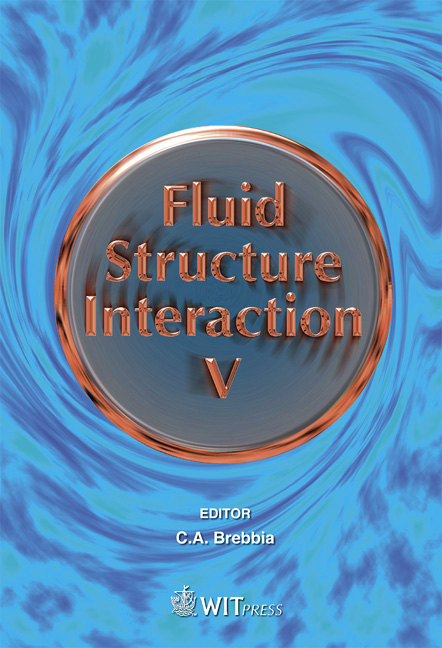Simulation Of Elastic Scattering With A Coupled FMBE-FE Approach
Price
Free (open access)
Transaction
Volume
105
Pages
12
Page Range
137 - 148
Published
2009
Size
180 kb
Paper DOI
10.2495/FSI090131
Copyright
WIT Press
Author(s)
D. Brunner, M. Junge & L. Gaul
Abstract
In this paper scattering problems with elastic obstacles that are hit by an incident acoustic wave are discussed. Underwater acoustics mainly differs from air acoustics in the fact that a strong coupling scheme between the structural part and the acoustic domain is necessary. Such a scheme is discussed, using the fast multilevel multipole boundary element method (FMBEM) to model the exterior acoustic fluid and the finite element method (FEM) to model the structural part. To obtain a high flexibility, an interface to a commercial FE package is established. For a high efficiency, an iterative solver with preconditioning is applied. The numerical results are compared with an analytical solution for a model problem. Keywords: elastic scattering, fluid-structure interaction, FE-BE coupling, fast boundary element method, multipole method. 1 Introduction Fluid–structure interaction deals with the mutual influence of an acoustic and a structural domain. Since water is assumed as acoustic fluid with a high density a the structure is thin-walled, the feedback of the acoustic pressure onto the structure has to be taken into account. As a consequence, fully coupled simulation schemes have to be applied, which are computationally more expensive since a structural problem and an acoustic problem have to be solved simultaneously. In this paper, scattering problems are discussed where the structure is excited by an incident wave. The structural part is favorably modeled using the FEM. For the infinite fluid domain, the BEM is applied. To overcome the drawback of fully populated BE matrices, the fast multipole method is used.
Keywords
elastic scattering, fluid-structure interaction, FE-BE coupling, fast boundary element method, multipole method.





